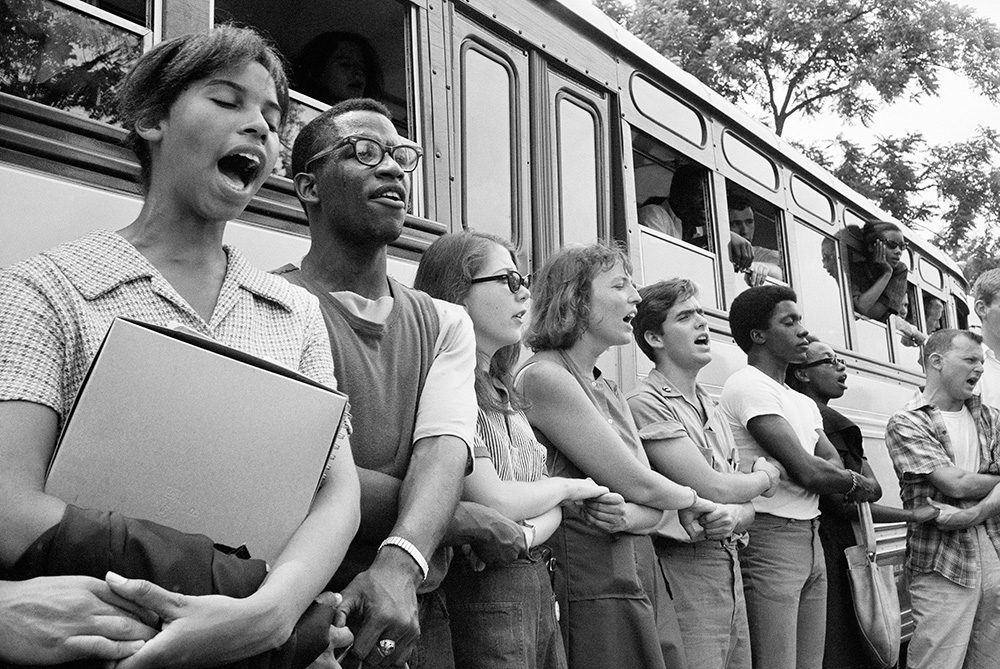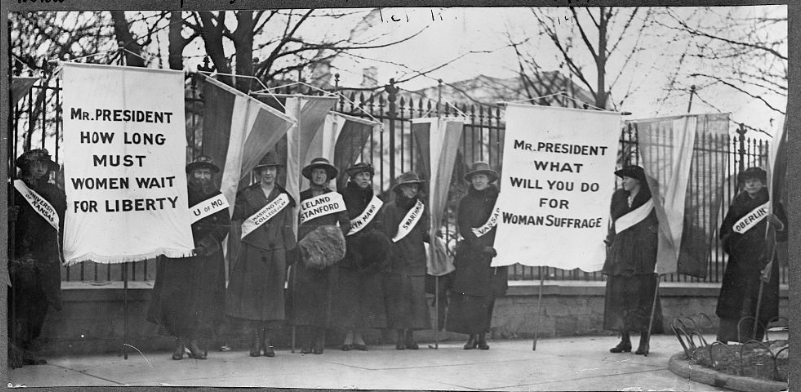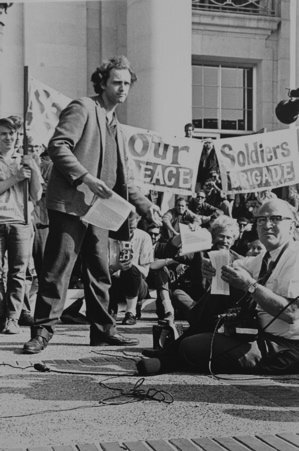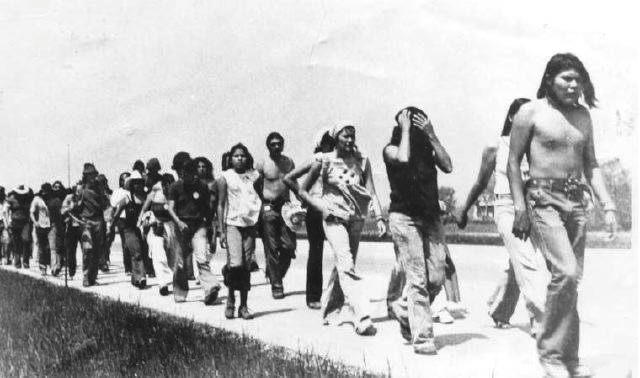The enduring legacy of the Civil Rights Movement lies not in soundbites from its most charismatic leaders, but in the impact it had on the lives of ordinary people.
-
Spring 2021
Volume66Issue3
Editor's Note: Thomas C. Holt is the James Westfall Thompson Professor of American and African American History at the University of Chicago and a preeminent scholar of black heritage and descendants of the African diaspora in America. He adapted the following essay from his most recent book, The Movement: The African America Struggle for Civil Rights, published by Oxford University Press.

Perhaps nothing evokes the spirit of the Civil Rights movement era as much as the protest song “Freedom Is A Constant Struggle.” Part paean, part dirge, at once uplifting and cautionary, the song captured the hopes and sacrifices of a generation determined to make real the nation’s professed commitment to social and political equality. But equally important, it anticipated the enduring impact that that movement would have on the lives, consciousness, and destinies of those activated by it and those not yet born. Beginning with the declaration that “Freedom is a constant struggle” and ending with the plaintive hope “... O Lord I've struggled so long that I must be free,” the song evokes an image of lives transformed.
It was no accident that the seemingly plaintive refrain of the song became increasingly popular as the struggles of the 1960s grew more intractable and the list of movement martyrs grew longer. On picket lines and in mass meetings ordinary folk voiced a hard lesson handed down from African American generations past. Freedom is a prize won not in a single campaign, but in a long struggle waged by a determined and committed people. And, ultimately, it is not exceptional leaders but ordinary people themselves, conscious of the historical possibilities of their moment and acting collectively, who have the capacity to win that fight and change their world.
Thus framed as a summons to continued struggle, the song's plaintive cadence is subtly transformed, giving way to an undaunted resolve, resonant with the tempo of a people marching.
The Civil Rights movement has become a well narrated era of recent American history. Its images re-broadcast every January and February in tandem with celebrations of Martin Luther King Jr's birthday and Black History Month have far too often been reduced to select soundbites of King's eloquence. Even when supplemented with the image of Rosa Parks's iconic sit-in on that Montgomery bus, the movement is most often represented as the individual or collective acts of heroic and charismatic male leaders.
And yet a deeper examination of the movement reveals a resistance less driven by heroic male leaders showing the way than simply the accumulated grievances of ordinary citizens, newly conscious of the means and possibility to act.
The most active participants in the social movement that gripped the country for roughly a decade during the mid-twentieth century were very cognizant of its distinctive qualities: collective action, sustained commitment, and the determination to achieve fundamental changes in the social order and in the power relations that sustained it. Those activists summarized that engagement in two words, “The Movement.”
Occurring in different places, under different organizational auspices, with sometimes different specific objectives, its singular character—signaled textually by the definite article and the capital letters—was that ordinary people were moving in unison to achieve what they hoped would be revolutionary change.
And yet, while most historians would agree with Jacqueline Dowd Hall's characterization of the Civil Rights movement as “the most remarkable mass movement in American history," popular retrospectives tend to be more mixed, very often obscuring the very qualities that Hall hoped might enable it to speak to current challenges. Seeking to mute that voice, erstwhile staunch defenders of the racial status quo have taken to quoting selective passages from Martin Luther King Jr's speeches to sustain their reactionary views.
Meanwhile generations of black youth born in the movement's aftermath are apt to be critical of its accomplishments, given the continued salience of a racial order that demeans their worth and limits their life prospects. And the powerful influence that the movement exerted on other social movements during the second half of the twentieth century, as well as on American thought and culture more generally, is often underestimated, if not ignored altogether.
But the movement experience itself shaped the values, perspectives, and vision of its participants as much as—and likely more than—the titular leaders who sought to determine its objectives and shape its course. In a book that draws its title from the song, “Freedom is a Constant Struggle,” Angela Davis argues that depicting the movement as merely the work of heroic individuals risks leading future generations to misrecognize their own capacity to act collectively to achieve social justice.
Although it is true that the movement did not—could not—completely overturn the racial bias and inequality that had been lodged in America's democratic experiment since the nation's founding, it did succeed in destroying the apartheid-like forms of the social order that had emerged at the dawn of the twentieth century. That social order posed a lethal obstacle to any black southerner who even attempted to challenge an impoverished and devalued life. At the very least, then, the movement, as the song quoted above suggests, prepared the ground for future generations' struggles to make a more just society, to make black lives matter.
The case for the influence of the movement on other social movements is more complex, but it, too, must be assessed in historical perspective. The 20th-century course of social movements whose trajectories stretched back to earlier decades and even back to the nineteenth century were influenced or reinvigorated by the civil rights struggles of the 1960s.
The American campaigns for women's rights, for example, were an outgrowth of women's active roles in the radical antislavery movement that began two decades before the Civil War. It was through those experiences that a remarkable cohort of white and black women leaders asserted their right even to speak in public and subsequently laid claim to the right to vote. Sometimes allied, sometimes hostile, the mutual aspirations of black and white feminists over the century following the Civil War formed a historical preamble for the women's movements that emerged after World War II.

But that new generation of feminists pursued a different, more militant agenda in the latter half of the twentieth century. No doubt their reorientation owed much to the dynamics of their own lived experiences in postwar America, but since much of its leadership at that point had come of age during the movement years, and in fact many had been witnesses to or active in that movement, it is likely that they found resonances there in what was transpiring around them.
As the experiences of Ella Baker and other activists show, the movement itself was not free of gender biases, but this, too, could and did become an inspiration for feminist activism. Certainly some of the black women activists coming of age during the Civil Rights Movement drew on those experiences to give shape to a black feminist agenda.
Probably the most immediate and direct influence of the Movement was on the student rebellions during the 1960s on college campuses across the nation, black as well as white. In these cases, the links to movement activists are often clear and direct. The first of these student movements emerged at the University of California at Berkeley in September 1964, just a month after the Mississippi Challenge at the Democratic national convention.
Mario Savio, a leader of the Berkeley Free Speech movement, had only recently returned from the Mississippi Freedom Summer project when he rose on December 2, 1964, to urge Berkeley students gathered on Sproul Plaza to take direct action to force the university to address their grievances concerning the very character and purpose of their education. In his audience were several others who had endured the same harrowing experiences in Mississippi that summer as he had. Just months later a parallel student movement emerged at Howard University, the unwitting incubator of field workers for SNCC and CORE earlier in that decade.

On both black and white campuses, student demands would evolve over time from campus-specific issues to broader challenges to school curricula, governance, and what many students saw as their school's tacit support of the Vietnam War. Among their specific demands were curricular changes to recognize the historical and contemporary place of black people in American society.
Native American struggles for justice stretched back to the earliest days of the American republic, but even then the respective struggles of black and red Americans for freedom and respect were often interlinked, albeit sometimes as friends, sometimes as foes. But the modern American Indian movement was founded in July 1968, just months after Dr. King had welcomed Native Americans into the coalition formed to launch the Poor People's Campaign. Just a year later, when a new pan-Indian group, the Indians of All Tribes, launched a nineteen-month occupation of the recently abandoned Alcatraz Island in the San Francisco Bay, their occupation drew support from black as well as white equal rights activists in the Bay Area, especially from the student movement at San Francisco State University.
The 1970s opened onto a series of similar protests by Native American groups, including a seventy-one-day occupation of Pine Ridge Reservation, the site of the infamous Wounded Knee massacre of Indians by American army units in 1890. The “Longest Walk," a march from California to Washington in 1978 to protest a congressional proposal to extinguish Indian treaty rights, was likewise a striking echo of the Poor People's March exactly a decade earlier.
Other initiatives during what some have dubbed the “red power” era of Native American protests resemble the shifting perspectives and objectives of diverse African American social movements during the late 1960s and early 1970s. In 1979, the American Indian Movement established an Opportunities Industrialization Center to train Native American workers for the new economy, while other groups established "survival schools” to teach and revitalize traditional Indian cultures and advocate for greater control of the institutions in their communities, all initiatives that black movement leaders like Leon Sullivan and Jesse Gray would have recognized and commended.
The Chicano movement that arose in the 1960s likewise had roots in the mid-nineteenth and early twentieth centuries, but grew more militant in the wake of Cesar Chavez's United Farmworkers Union campaign. Founded in 1962, Chavez's union embraced a philosophy and tactics very similar to the Gandhian approaches advocated by Martin Luther King Jr's SCLC. By the late 1960s, however, more militant groups emerged, who much like black groups of that era were not philosophically committed to nonviolence. Representatives of the militant Chicano groups were incorporated uneasily into the Poor People's Campaign, for example.
Such tensions were part of a long history of relations between blacks and Mexican Americans. Even as they fought similar battles against segregated schools and other public accommodations during the 1940s and 1950s, for example, African Americans and Mexican Americans often ended up on opposite sides of the legal argument, especially in contexts where Mexican Americans sought to take advantage of their putative legal status as “white” to gain access to privileges otherwise denied to black Americans.
Although that particular source of intergroup tensions became much less salient with changes in their relative political statuses by midcentury, a common political front could never be taken for granted. Nonetheless, the final decades of the twentieth century witnessed numerous examples of fruitful alliances between black and diverse Latino communities. Careful opinion surveys and actual voting patterns have consistently shown that their historical differences had become much less politically important, making coalition politics—formal and tacit—more viable. The most striking evidence of this phenomenon is found in the political coalitions forged by Harold Washington's mayoral campaign in Chicago in 1983 and Barack Obama's presidential campaign in 2008.

In recent years the spirit and sense of mission of the 60’s movement has re-emerged in diverse settings and the multiple challenges to unjust, often deadly policing of black communities. The “Black Lives Matter” slogan echoes the same deep sense of injury and injustice felt by those who protested the murder of Emmet Till in 1955, the brutal suppression civil rights demonstrations in Birmingham and Selma in 1963 and 1965, and the murders of Michael Schwerner, Andrew Goodman, and James Chaney in the Mississippi Delta in 1964. The destiny and outcome of these 21st century movements remain yet unknown, but they resonate with the visceral anger that stirred grassroots uprising during those earlier moments. And they are likely to reflect the same dynamic wherein that earlier social movement reshaped the consciousness and commitments of a generation.
In sum, the dynamics of contemporary struggles to change the nation's racialized social order are destined to be no less fraught and complicated than those preceding it. They are but a different phase of a continuing struggle—a struggle whose core assertion across many decades has been that black lives mattered, a repeated challenge to state actions and individual abuses that have long demeaned and disrespected a people’s claims to basic human rights. It is a claim that sparked moments of individual and collective rebellions at various moments over the past two centuries, a claim that each generation seems called on to repeat. Thus does it echo the protean insight of the haunted civil rights anthem, “Freedom is a constant struggle.”

